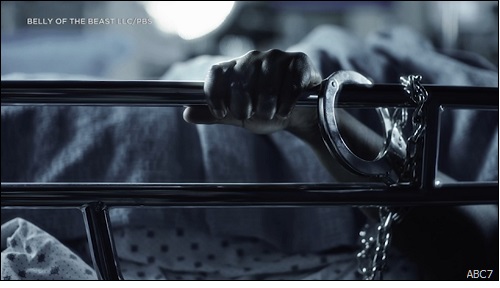
|
|

|
|
| April 20, 2024 |
|
California compensates victims of forced sterilizations, many of them Latinas 
SACRAMENTO - Mary Franco was 13 years old when she was sterilized in a mental institution for being “mentally weak.” Kelli Dillon thought while in prison that she would have a cyst removed on her ovaries when she actually had a hysterectomy. The irregular procedures, which weren’t communicated to patients, occurred for decades in California. After decades of struggle and pain, the state is recognizing the victims and their families.
California approved, as part of the budget, compensation of up to $25,000 last week for some of the thousands of people who were sterilized, some when they were just girls, for decades by the government, which considered them “unfit to reproduce.” California is the third state, after Virginia and North Carolina, to compensate the victims of eugenics laws, which sought to sterilize people with mental illnesses, physical disabilities and other traits considered undesirable, supposedly to “improve the human race.” The laws were passed with the support of both Democrats and Republicans. California approved setting aside $7.5 million for payments, part of a $262.6 billion operating budget that was signed by Gov. Gavin Newsom. “No figure would be enough to compensate something as terrible as taking away a person’s decision to start a family,” Susy Chávez, communications director for California Latinas for Reproductive Justice, or CLRJ, told Noticias Telemundo. “But we are happy to at least know that the state is admitting its guilt and that it is doing something to repair it and not continue to hide a story that keeps repeating itself. "In some way it helps to set a precedent to bring these stories to light and bring justice to all survivors," Chávez said. CLRJ had fought for the compensation and for the right of people to decide whether they want children. Latinas disproportionately targeted Since the early 1900s, California sterilized more than 20,000 people before the eugenics law was repealed in 1979. According to calculations by the Sterilization and Social Justice Lab at the University of Michigan, there are 627 survivors, 383 from eugenics sterilizations and 244 from illegal sterilization in prisons. Both men and women were sterilized, as were people of all races and ethnicities, according to official documents provided to Noticias Telemundo by CLRJ. Latinas were disproportionately victims. The Michigan lab estimates that, during the program’s heyday from 1919 to 1952, women and girls were 14 percent more likely to be sterilized than men, Latinas were 59 percent more likely than non-Latinas, and Latino men were 23 percent more likely than non-Latinos. California’s program, which began in 1909, was by far the country's largest, accounting for a third of all people sterilized in the U.S. under such laws. It was so prominent that it inspired similar practices in Nazi Germany, said an expert on the eugenics movement, Paul Lombardo, a law professor at Georgia State University. “The promise of eugenics from the beginning was to end all state institutions: prisons, hospitals, nursing homes, orphanages,” Lombardo told The Associated Press. “The people who were in those places would just stop being born after a while if their parents were sterilized.” California’s proposal for redress for victims is unique in that it would also pay women whom the state forced to be sterilized while in prison, as recently as 2010. A state audit in June 2014 found that the state sterilized 144 women from 2005 to 2013 and that none of them were properly informed or offered alternative treatment. According to the audit, of the 144 women who underwent a process called tubal ligation, 65 percent were Black, Hispanic or Mexican or were members of other minority groups. “This type of human rights violations did not end these laws that were passed 100 years ago but have continued in one way or another,” Chávez said. “An example of that is the incarcerated population that has been sterilized. In a way, these eugenics laws continue to have a very dark legacy in the institutions of the state.” CLRJ has fought for at least eight years to approve compensation, Chávez said, along with groups like the California Coalition of Incarcerated Women, the Disability Rights Defense and Education Fund and Back to the Basics, which seeks to empower disadvantaged communities in Los Angeles. They also worked with Renee Tajima-Peńa, the director of the PBS documentary “No Más Bebés,” or “No More Babies,” on documenting the more than 200 forced sterilizations that occurred from 1968 to 1974 at the Los Angeles-USC Medical Center. The Los Angeles County Board of Supervisors apologized for the sterilizations in 2018, but the women aren’t eligible for pay under the recently signed state budget. The activists say they hope to include them in the future. For some women, the trauma of the procedure was compounded by having to put together the pieces of a macabre puzzle about their own lives. (Source: NBC News) Story Date: July 24, 2021
|